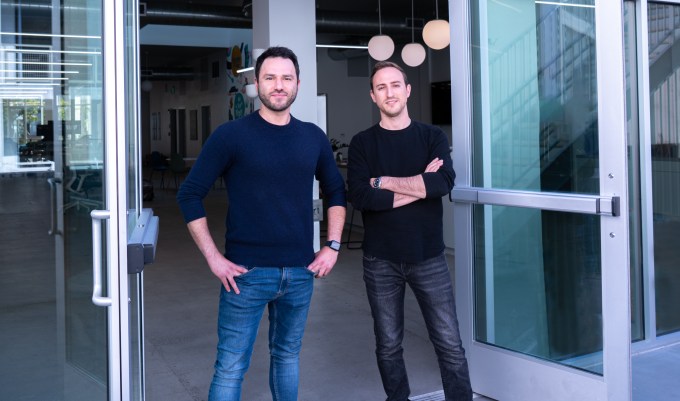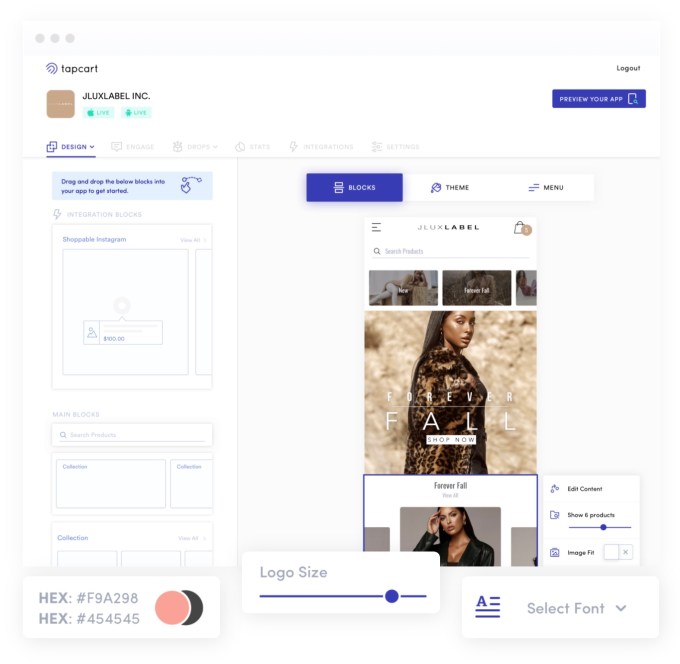E-commerce saw a massive surge of activity and growth in 2020; and while we may hear a lot about how big companies like Amazon got even bigger during the Covid-19 pandemic, that rising tide also lifted a lot of smaller boats. And that, in turn, has had a big impact on the wider e-commerce ecosystem.
In the latest development, ShipBob, which has built an operation and tech platform that today works with some 5,000 e-commerce businesses to run shipping and logistics like their bigger rivals, has raised $200 million. ShipBob is already profitable, but it will be using this money to double down on newer areas of business: both in terms of expanding geographically, and technically, with more R&D around software, robotics, and autonomous systems.
“We constantly evaluate the needs of our merchants today, where we believe their needs will evolve in the future, and prioritize what can drive the most impact to help make them successful and differentiate from their competitors,” said Dhruv Saxena, the company’s CEO, in an interview.
Chicago-based ShipBob has confirmed that the round pushes its valuation to over $1 billion, doubling its valuation compared to its last round, a Series D that it closed in September 2020.
Bain Capital Ventures is leading this Series E round, with SoftBank, Menlo Ventures, Hyde Park Venture Partners, Hyde Park Angels and Silicon Valley Bank also participating. Several of these are repeat investors in the company.
ShipBob’s business is part infrastructure play, and part tech play, in what Saxena, who co-founded the company with Divey Gulati, described to us as a “full-stack approach.” On the infrastructure front, the company operates warehouses across around 20 locations in the U.S., Canada, Europe and Australia (with plans to use some of this hefty round to expand that list to 10 more centers), from which its customers can store and distribute the goods that they are selling online.
The company then provides a merchant application to its customers to help track that inventory and to help liaise with the warehouses to select items to pick and send to fill orders.
Thirdly, it integrates with a number of shipping companies to then actually send out those orders to customers. Altogether it says it integrates with some 40 partners, ranging from the likes Walmart (to power two-day delivery) and Pachama (to carbon off-set deliveries), plus Amazon, Walmart, Shopify, BigCommerce, Wix, Square and Squarespace so that people setting up sites or selling through those platforms can use ShipBob to handle the orders once a customer has clicked on “buy.”
Fulfillment and logistics are not the most obvious “face” of e-commerce, but to companies that are selling items online (or indeed, offline) that need to be delivered to someone after purchasing, they can be a make or break part of the business model, nearly as important as having a good storefront that works quickly, gets people where they want to be, and offering them things they want to buy. In logistics, the many, various items that are calculated as part of that operation — setting, intake and storage, pick and pack, shipping, and return fees are just some of those items — potentially rack up to a significant cost for the sellers, which they either pass on to the buyers or stomach to compete on price against much bigger players like Amazon. On top of that, it’s almost inevitable that shipping and logistics are not “core competencies” of the companies that heavily rely on them.
And as many have pointed out, Amazon’s success is built in large part on economies of scale, by making a better return because of how much it’s passing through the same system, distributing the cost of operation across more goods.
Companies like ShipBob — and it is not the only one in this space, with others including Amazon, ShipHero, Byrd, OceanX, Shippo, and many more — have essentially built a logistics operation that lets those companies outsource the work of doing that themselves, much as they would use a payments provider like Stripe rather than building a payments flow from the ground up. ShipBob also, by virtue of working with many businesses, creates that economy of scale by bringing their orders and work all together, mimicking essentially what Amazon does for itself.
Saxena says that ShipBob already has a “Prime” style offering for customers — by which he means, a way to provide low-cost or even “free” faster shipping for orders over a certain amount of money — but it will be interesting to see how and if it ever looks to move up the stack and see how it can leverage its logistics control and command to move up the stack and work on loyalty or membership programs for the most dedicated customers.
“Our customers are the brands and we built ShipBob to support their business growth,” he said. “A requisite to supporting their growth is offering fast and affordable shipping across any channel that they want to sell, so we do offer a ‘Prime’ style offering to the brands that we support today. For example, ShipBob merchants can offer affordable 2-day shipping directly through their website and through the marketplaces where they sell, like Amazon, Walmart, Facebook, and Google.”
What will also be interesting to see is how and if the growth we’ve seen in e-commerce in the last year — fueled by a very particular set of circumstances that either closed stores, or kept people away from them, or both — will be sustained, and how that will impact ShipBob. As we pointed out yesterday, there was a 44% bump in COVID-19 online spending in 2020, but in the year before that the U.S. has had e-commerce growth of around 15% as it’s a pretty penetrated market already.
“Due to Covid, e-commerce penetration in the US got pulled forward by 5-7 years and while some of it will revert back as the economy opens up, it is still higher than the pre-COVID levels across nearly all verticals,” Saxena said, citing the company’s own stats that appear to bear this out. “Many consumers who were forced to adapt to online buying are continuing to buy things online. For example, older demographics bought online for the first time and will continue to do so, while younger demographics who bought a considerable percentage of their goods online already, increased that percentage while the size of their buying power increased as well.”
It’s for this reason, and the fact that ShipBob is profitable, that investors are happy to make a bullish investment now.
“The fastest growing ecommerce brands recognize that world-class fulfillment increases revenue and builds customer loyalty,” said Ajay Agarwal, partner at Bain Capital Ventures and a board member, said in a statement.. “These leading brands are partnering with ShipBob as the one-stop cloud logistics platform to manage and deliver their merchandise

from eCommerce – TechCrunch https://ift.tt/3qwnxKK

via
IFTTT

 from eCommerce – TechCrunch https://ift.tt/3y7Mkr3
from eCommerce – TechCrunch https://ift.tt/3y7Mkr3 via IFTTT
via IFTTT












